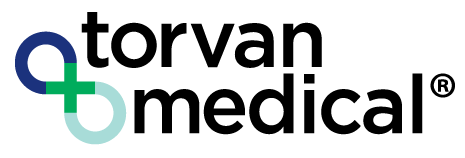Introduction
Medical waste in healthcare is a growing and complex challenge. According to Health Care Without Harm, the global healthcare sector is responsible for nearly 5% of global greenhouse gas emissions, with medical waste being one of its most visible and costly by-products.1 In the U.S. alone, hospitals generate over 5 million tons of medical waste annually, and nearly 30% of this waste originates from the operating room, one of the most equipment and resource intensive areas in healthcare.2
Improper disposal of medical waste doesn’t just strain environmental systems, it drives up operational costs, introduces safety and compliance risks, and adds to the burden on already-stretched healthcare resources. As sustainability mandates grow and Environmental, Social, and Governance (ESG) goals take center stage, medical facilities need to be proactive in implementing effective waste-reduction strategies.
In this guide, we’ll explore how to reduce medical waste using eight practical, process-driven solutions, with a special focus on medical device reprocessing, an area where immediate, measurable improvements can be made.
1, 2 Health Care Without Harm + Arup’s landmark report (global + country breakdowns; Scopes 1–3).
The Main Types of Medical Waste
Understanding what constitutes medical waste is the first step in effectively reducing it.
1. Infectious and Hazardous Waste
Includes sharps, blood-soiled items, pharmaceuticals, and pathological waste. These must be disposed of using certified biohazard procedures to prevent contamination and disease transmission.
2. Recyclable v Non-Recyclable Waste
Many packaging materials and disposables are technically recyclable, but poor segregation practices often send them to landfills. Correct bin placement and staff training are key.
3. Single-Use v Reusable Instruments
Single-use instruments generate large volumes of high-cost waste, especially in surgery and endoscopy. Reusable devices, when maintained and reprocessed properly, can provide both economic and environmental savings.
8 Practical Strategies to Reduce Medical Waste in Hospitals
The following eight strategies focus on actionable improvements for waste disposal, particularly in medical device reprocessing, sterile storage, and purchasing systems.
1. Implement Reusable Instrument Cleaning Systems
Reusable medical instruments are one of the most effective ways to reduce waste in healthcare. However, without proper cleaning and maintenance systems, facilities may still discard these tools prematurely due to poor condition or sterilization failures.
Featured Solution: Torvan AquaBrush System
The Torvan AquaBrush System is an eco-conscious alternative to harsh chemical cleaning. Using micro-abrasive bicarbonate crystals, this closed-system unit gently removes contaminants from surgical instruments with minimal surface degradation. This may significantly extend instrument lifecycles, helping reduce both waste and replacement costs.
Why this matters:
- Reduces need to discard instruments due to staining or inability to clean all surface areas of the instrument
- Minimizes risk of exposure to residual chemicals
- Lowers reliance on single-use surgical tools
2. Automate Reprocessing to Minimize Errors and Waste
Manual reprocessing, especially of complex lumened instruments, is prone to variability. This not only increases infection risk but also leads to reprocessing failures, unnecessary discards, and higher chemical and water use.
Featured Solution: TPS Flushing Pump
The TPS Flushing Pump automates internal flushing of lumened devices (e.g., endoscopes, robotic surgery instruments), delivering consistent flow and volume control. It reduces the human error component while optimizing fluid consumption.
Benefits include:
- Facilitates compliance with IFU guidelines
- Reduces repeat reprocessing events and downtime
- Helps protect device integrity for extended reuse
Improper reprocessing is a top cause of premature instrument failure. Automating this step not only assists with patient safety but may also significantly cut waste due to unnecessary instrument disposal.
3. Upgrade to Modular, Durable Medical Equipment
One overlooked source of medical waste is fixed infrastructure. When cabinets, carts, or workstations become damaged or outdated, entire units are often discarded—even if only a portion is unusable.
Featured Solution: EndoCab™ Medical Storage Cabinets
EndoCab™ medical storage cabinets are designed to adapt to your needs over time. Rather than replacing units, facilities can add, remove, or reconfigure components. This keeps materials in use longer and helps reduce waste.
Key advantages:
- Component-level serviceability
- Upgradable over time (e.g., when new scopes or technology are introduced)
- Reduces disposal of large-scale cabinetry
- Minimizes environmental impact of renovations and facility expansions
Pair modular systems with RFID or barcode inventory tracking for full lifecycle visibility.
4. Eliminate Overuse of Single-Use Items (When Safe)
Single-use devices (SUDs) exploded in popularity due to infection control concerns – but over time, many items became default choices even when reusable options were available.
Smart ways to reduce SUD waste:
- Develop clinical guidelines for reusable vs. disposable item selection
- Introduce staff education programs on reusables’ safety and efficacy
- Conduct cost-benefit analyses for high-volume disposable items
- Explore FDA-cleared reprocessing options for select SUDs (e.g., pulse oximeters, compression sleeves)
Clinical departments with high SUD waste include: OR, ER, endoscopy, outpatient surgical suites.
5. Improve Waste Segregation & Labelling
According to WHO, up to 85% of hospital waste is non-hazardous, yet much of it is treated as biohazardous due to poor segregation. This dramatically inflates disposal costs and environmental impact.3
Tactical steps to improve:
- Use clear, color-coded bins (e.g., red for biohazards, blue for recyclables)
- Place bins strategically near point-of-use areas
- Train both clinical and custodial staff regularly
- Audit waste streams monthly to identify common errors
Effective segregation can reduce regulated medical waste volumes by 20-50%. This may translate into substantial cost savings.4
6. Partner with Regional, Sustainable Suppliers
The carbon footprint of medical equipment isn’t limited to its usage. Transportation, packaging, and disposal all contribute to waste in healthcare.
Featured Advantage: North American Manufacturing
By manufacturing in North America, Torvan Medical reduces transport-related emissions, minimizes excess packaging, and shortens lead times for equipment procurement. In addition, sourcing close to end-users simplifies warranty service and parts replacement, extending the usable life of each product.
Sustainability benefits include:
- Lower embodied emissions
- Easier end-of-life recycling
- Local compliance with environmental standards
7. Use Workspace Planning Expertise to Optimize Material Usage
Poorly designed spaces in Sterile Processing Departments (SPDs) often lead to duplicate purchasing, improper storage, and inefficient workflows, all of which generate waste.
Featured Advantage: Workspace Planning Expertise
Torvan Medical’s workspace planning expertise can help hospitals plan or renovate SPDs with waste-minimization in mind. Workspace planning incorporates best practices in workflow, modular storage, and scalable design.
Proper workspace planning may help with:
- Over-purchasing of carts, bins, and shelving
- Wasted space leading to underutilized materials
- Workflow inefficiencies that result in extra reprocessing
Use workspace planning best practices to integrate modular storage, drying cabinets, and automation tools from the beginning, thereby reducing both waste and future renovation costs.
8. Monitor, Measure, and Report Waste Output
All the technology in the world won’t reduce waste without measurement and accountability. Conducting regular waste audits allows facilities to see where waste originates and how interventions are performing.
Steps to take:
- Start with a baseline audit of all waste streams
- Segment data by department and waste type
- Introduce simple KPIs (e.g., instrument discard rate, water/chemical use per cycle)
- Share monthly reports with department heads to drive improvement
Some SPD management platforms now include built-in waste tracking features tied to specific devices and processes. Integrating these into your system creates a feedback loop for continuous improvement.
Conclusion
Reducing medical waste isn’t just about being “green.” It’s about enhancing operational efficiency, lowering total cost of ownership, ensuring compliance, and protecting public health. And when it comes to medical device reprocessing, the tools and strategies are already within reach.
By investing in reusable technologies, automated reprocessing systems, and modular, upgradeable infrastructure, your facility can start cutting waste today and build a foundation for long-term sustainability tomorrow.
Interested in reducing waste at your facility?
Torvan Medical supports hospitals and surgical centers with smart, scalable solutions that cut waste, improve compliance, and reduce cost.
Call us toll-free at 1-888-832-0355 or contact us online.


